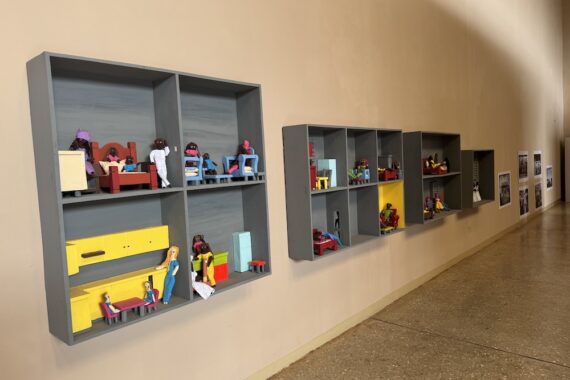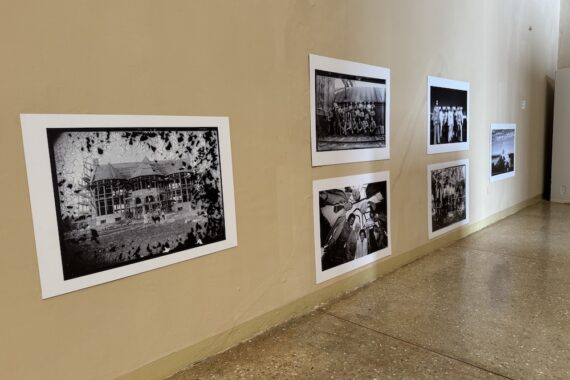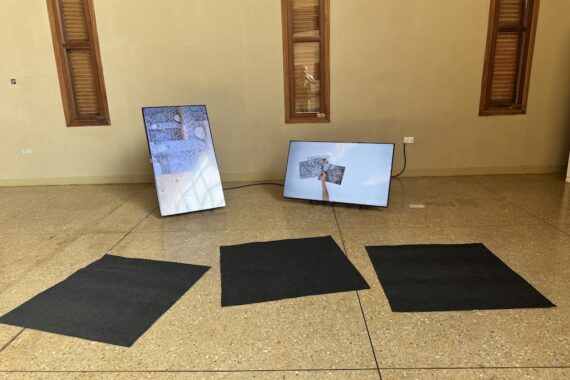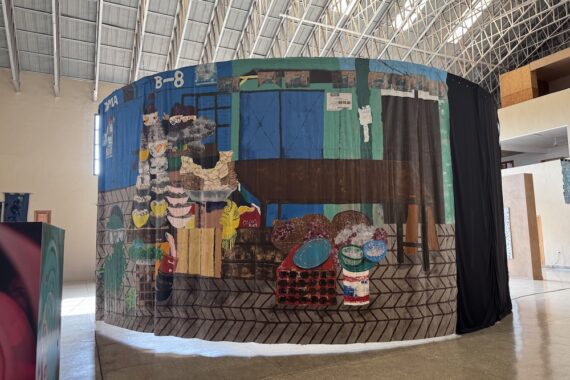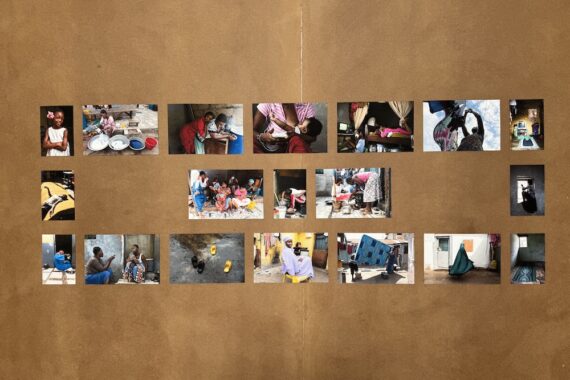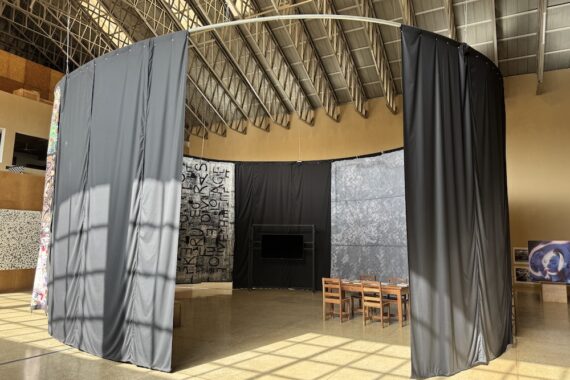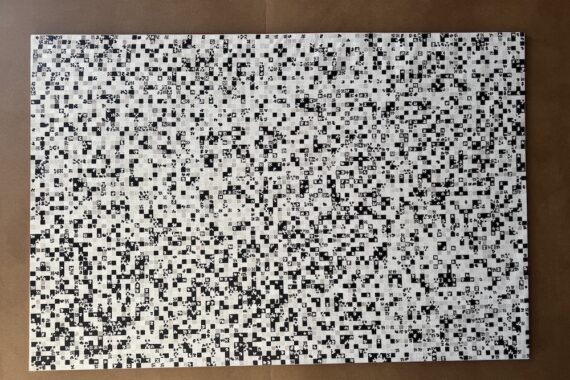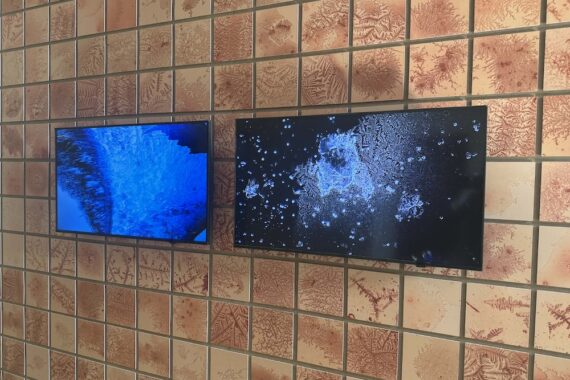By John Owoo
(Tamale – Ghana)
An exhibition showcasing works by 14 women that explore themes of regeneration, ancestry, and speculation is underway at the Savannah Centre for Contemporary Art (SCCA) in Tamale, the northern regional capital.
Titled “The Writing’s on the Wall,” participating artists include Dr. Tracy Naa Koshie Thompson, Lois Selasie Arde-Acquah, Priscilla Kennedy, Kezia Ouomoye, Afia Prempeh, Fibi Afloe, Zohra Opoku, Baerbel Mueller, Nuotama Bodomo, Nyornuwofia Agorsor, Na Chainkua Reindorf, Naomi Boahemaa Jr. Sakyi, Akosua Odeibea Amoah-Yeboah, Anna Friemoth, and Penny / Pierre Gentieu.
While its premise recognizes the gendered setup of the participating artists, the exhibition is careful not to reduce its thematic focus to a simple “women’s art” story. Instead, it highlights broader ideas of mothering, caretaking, conceiving, passing on knowledge, and letting go—roles that go beyond gender to show the wide ways in which life, ideas, and culture grow.
For example, Dr. Tracy Naa Koshie Thompson uses living microbes and the natural intelligence of saliva ferns to create polymer-like material forms, anchoring the exhibition in ecological questions and the microscopic systems that support life.
Na Chainkua Reindorf merges indigenous spiritual cosmologies with magical realist landscapes, creating vibrant, visionary scenes that exist between historical memory and futuristic visions. Similarly interested in hybridity, Priscilla Kennedy weaves fantastical octopoid cyborg forms—part alien, part ancestor—implying bodies that have adapted to new environmental, political, and technological realities.
Naomi Boahemaa Jnr. Sakyi captures market scenes that evoke memories of her family life in the Bono Region, while Fibi Afloe’s photographs preserve the essence of the home that carries her mother’s memory. Anna Friemoth traces a photographic path that reflects the journeys of her mother and her great-great-great-grandfather, Penny and Pierre Gentieu. Meanwhile, Kezia Ouomoye draws on storytelling methods inspired by German dollhouses, shaping events and characters from her own family history.
Nuotama Bodomo asks, “We honor our mothers, but do we truly see them?” Her film, centered on the Dagomba heroine Yennenga, reflects on what is forgotten and what often goes unnoticed or unimagined. In a nod to the unknowable, Akosua Odeibea Amoah-Yeboah infuses her curatorial texts with coded language, her cryptic writing resisting both readability and certainty.
Relatedly, Baerbel Mueller’s vanishing architectures and Lois Selasie Arde-Acquah’s infinite fractals suggest that meaning is never fully attainable—but that the journey toward understanding is as rewarding as the destination itself.
Curated by Robin Riskin, the exhibition takes its name from the biblical story of divine warning—an image often seen in popular culture—evoking cycles of collapse, revelation, and renewal. Inside the show, this imagery becomes a metaphor for the dual nature of walls and wombs: structures that can both shelter and contain, nurture and restrict.
Indeed, the artists explore these tensions through various material and conceptual processes, including microbial matter, digital culture, textiles, handicrafts, mythology, and speculative science.
While each artist’s practice stands alone, the exhibition consistently emphasizes interconnectedness—across generations, worlds, methods, and mediums. It spans various creative lineages, showcasing millennials and Gen Z alongside Gen X, baby boomers, and the symbolic category of “ancestors.” This intergenerational framing presents the exhibition as an ongoing lineage: a reminder that artistic ideas seldom start or end on their own but move through people, memories, and communities over time.
Notably, the exhibition goes beyond showcasing material artworks to emphasize the act of creation as a social and collective effort. Process, collaboration, improvisation, and conversation are at the heart of the project, reflecting how many of these artists manage their careers—balancing personal practice with cultural stewardship, community building, knowledge-sharing, and experimentation.
“The Writing’s on the Wall” demonstrates SCCA Tamale’s ongoing commitment to supporting experimental, boundary-pushing exhibitions that reflect the complexity of contemporary Ghanaian and African visual culture. By allowing artworks, walls, ideas, and curatorial approaches to evolve in real time, the exhibition creates space for new forms of renewal—artistic, emotional, spiritual, and communal.
The exhibition will close on Saturday, March 14, 2026.



